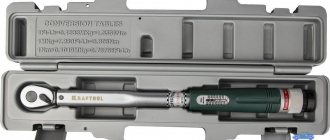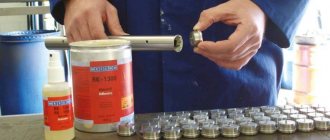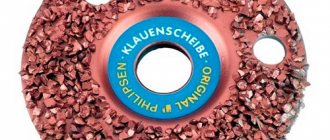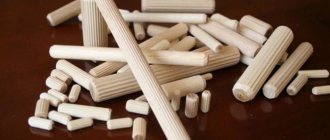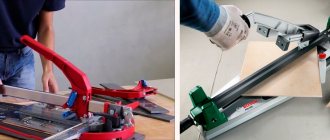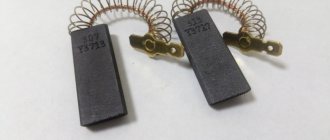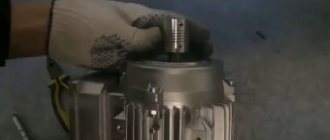How to connect mechanism shafts?
To transmit axial rotation, shafts are used, on which various gears and sprockets can be mounted. The connection is carried out using various methods, for example, couplings are used to connect shafts. Their features include the following points:
- It is possible to dismantle.
- The collection and production of the final product is greatly simplified.
- Many types of products allow you to compensate for various types of displacements that may occur during operation of the device.
- The device can withstand significant load.
Today, parts are connected to each other using welding technology extremely rarely. This is due to the fact that vibration and other impacts can cause cracks and other defects.
Incorrect fixation may result in device failure. The product is selected depending on the operating conditions. For example, shafts can move in a variety of directions.
How to choose the right shaft coupling
Currently, a large number of couplings are used in mechanical engineering, differing in the principle of operation and control, purpose and design.
Also, shaft couplings have many additional functions, for example, they are used:
- for turning the actuator on and off with a continuously running engine (controlled clutches);
- to protect the machine from overload (safety clutches);
- to compensate for the harmful effects of shaft misalignment associated with installation features (compensating couplings);
- to reduce dynamic loads (flexible couplings).
- driving and driven shafts;
- driving and driven coupling halves;
- additional parts or structural elements made integral with the coupling halves.
When assembling mechanisms, the driven mechanism is first installed, and then the electric motor. The motor shaft is connected by centering, the gearbox is attached and couplings are used in between.
Drive couplings are characterized by the following parameters:
- torque T, N*m or power transmitted at a certain speed.
- diameters of the connected shafts, changeable within a certain range. It is optimal when the shaft diameters are equal. The size is selected according to the larger one.
- overall dimensions
- mass and moment of inertia (these quantities are necessary for dynamic testing of the drive)
- maximum rotation speed, determined by the strength of rotating parts under the influence of centrifugal forces, wear resistance, heating of working elements or other criteria.
For long-term operation of the coupling, it is necessary to select it correctly. Most couplings are standardized. In this regard, the selection task comes down to choosing the standard size of the coupling from those available in the standards.
It must be taken into account that the following loads act on the coupling parts:
a) useful transmitted torque corresponding to the rated power of the drive;
b) inertial loads during unsteady motion of the machine;
c) shock and vibration loads during steady and unsteady machine movements;
d) loads from forced deformation of the elastic elements of the coupling.
The type of coupling must correspond to the operating conditions of the unit, installation and other specific requirements for the drive.
After selecting a coupling, it is necessary to check its weak elements and auxiliary parts of the structure. The rated torque of the clutch must be higher than the maximum torque of the engine. Otherwise, breakdowns, cracks, destruction of components, and leakage of lubricants and oil may occur.
The main characteristics when selecting a coupling are the torque and the corresponding shaft diameter.
In some cases, torque is specified in terms of power at a certain speed.
Clutch operating mode coefficient:
In drives from an electric motor they are used: for quiet operation and small accelerated masses (drives of conveyors, testing facilities, etc.)
at variable loads and average accelerated masses (metal-cutting machines, piston compressors, etc.)
under shock loads and large accelerated masses (rolling mills, hammers, etc.)
The diameters of the coupling mounting holes are consistent with the diameters of the ends of the shafts being connected, which can be different at the same torque due to the use of different materials and different loads of bending moments.
Other coefficients can also be used in the calculation:
- safety factors;
- working condition coefficients;
- angular displacement coefficient.
Those used in the calculations are given in the catalogs.
Also, the operation of couplings is accompanied by losses; the efficiency of couplings is usually taken equal to 0.985. 0.995
The figure shows the types of shaft displacements:
For long-term operation of the coupling, it is necessary to select it correctly:
The rated torque of the clutch must be higher than the maximum torque of the engine.
Otherwise, breakdowns, cracks, destruction of components, and leakage of lubricants and oil may occur.
Basic classification of couplings by main type of operation:
1. Permanent couplings that prevent the shafts from disengaging while the machine is operating.
2. Controlled or clutch couplings, which allow shafts to be connected or disconnected by acting on the couplings through a control system.
3. Automatically activated (self-controlled) - connecting and disconnecting shafts during machine operation automatically depending on the path traveled (single-turn clutches);
shaft rotation speeds (centrifugal clutches),
direction of torque transmission (overrunning clutch),
the magnitude of the rotating moment (torque limit clutch).
4. Safety clutches that disconnect shafts in case of violation of the normal operating conditions of the machine (equipment), when the transmitted torque exceeds the maximum permissible (limit torque safety clutches) or the rotation speed exceeds the permissible one (safety centrifugal clutches).
According to the design and the possibility of error compensation:
According to their designs and capabilities for compensating for installation errors of shafts, couplings are divided into the following groups:
- blind couplings. These couplings do not provide error compensation and require high precision shaft alignment. These include sleeve and flange couplings.
- compensating or movable couplings. These include gear couplings, Oldheim couplings, articulated couplings, etc. They provide compensation for installation errors in the axial and radial directions and shaft misalignment.
- elastic couplings. These include sleeve-pin couplings, toroidal couplings and couplings with elastic elements in the form of various plates. They primarily provide compensation for shaft misalignment.
Homemade coupling
To significantly reduce costs, the possibility of using a homemade design is being considered. Among the features we highlight the following points:
- To create a homemade design, you need a sprocket that can be removed from the crankshaft of an internal combustion engine.
- The transmission of rotation is carried out using a chain. Due to the use of steel in the manufacture of this product, strength increases significantly.
- The connection is made through two coupling halves. In this case, the star should be sawn in half. A cut-off part of the sprocket will be welded onto each coupling half.
- The coupling half is fastened using bolts. However, this connection method is not recommended if the load applied is significant. Fixation of detachable elements is ensured by a key when transmitting high force.
The above information indicates that such a product can be made using available materials. In this case, the resulting device is installed to transmit high torque.
Rexnord Omega
Omega series couplings are designed for elastic connection of rotating axes of mechanical drives using a torsion elastic element, which compensates for vibrations and the initial misalignment of shafts. These couplings have a split design, which greatly simplifies repair and maintenance. The connection of polyurethane with metal allows you to avoid slippage, firmly gripping the shafts. Widely used in industrial fans, mixers, compressors and pumps.
Classification of couplings
There are many different similar products that are used to transmit rotation. The classification by purpose is as follows:
- Permanent or connecting.
- Coupled and steerable.
Drive models are installed in a wide variety of designs. Neither are required for direct force transmission.
Shaft connecting products are used for constant transmission of rotation. They are divided into several main groups:
- Tough.
- Deaf.
- Connecting.
- Movable or flexible.
The simplest design option can be called blind couplings. In the manufacture of bushings and other elements, a wide variety of materials can be used, most of which are characterized by a high degree of protection from environmental influences.
Cone adapter couplings have become quite widespread, as they are easy to manufacture and can last for a long period. Splined versions can also be installed, which can transmit large forces during operation.
The classification of flexible design options is also carried out according to a large number of different characteristics. The following are widely used:
- Expansion. They are characterized by the fact that they can compensate for the axial displacement of parts relative to each other.
- Cross. Such mechanisms are installed in cases where there is a possibility of radial displacement.
- Membrane and drive, which are designed for radial and axial displacement. The leashes have a special element that ensures the position of both elements is fixed.
The selection of the most suitable connecting element is carried out according to the diametrical dimensions. The coupling halves compensate for the displacement of the axis, however, to increase the efficiency, oil is added. In most cases, steel is used in manufacturing, which is characterized by increased wear resistance. If it is necessary to protect the mechanism from the effects of electricity, special materials with certain properties are used.
Do not forget that cross products are characterized by a significant drawback - an increase in backlash due to severe wear of the protrusions.
In some cases, a leash version is used, which is also characterized by certain advantages and disadvantages.
Rigid and flexible couplings
The main purpose of this type of coupling is to transmit torque between two coaxial shafts with compensation for possible deviations.
Rigid backlash-free couplings are recommended for use when high precision and high transmitted torque are required. Elastic couplings are used to connect misaligned shafts to absorb vibration.
The ability to resist elastic deformation is the main feature of these types of couplings. Thanks to it, they allow angular relative rotation of the driving and driven coupling halves.
General diagram: half-coupling rigidly connected to the drive shaft - elastic links - half-coupling rigidly connected to the driven shaft.
Lamellar coupling
Maximum torque: 30000 N*m Maximum shaft diameter: 140 mm
Rigid coupling
Maximum torque: 450 N*m Maximum shaft diameter: 50 mm
Bellows coupling
Maximum torque: 300 N*m Maximum shaft diameter: 45 mm
Backlash-free jaw clutch
Maximum torque: 2080 N*m Maximum shaft diameter: 80 mm
Elastic jaw coupling
Maximum torque: 9000 N*m Maximum shaft diameter: 110 mm
Compact flexible coupling
Maximum torque: 35000 N*m Maximum shaft diameter: 180 mm
Gear coupling
Maximum torque: 5000 N*m Maximum shaft diameter: 125 mm
Highly elastic coupling
Maximum torque: 5100 N*m Maximum shaft diameter: 85 mm
Chain coupling
Maximum torque: 8000 N*m Maximum shaft diameter: 110 mm
Flexible sleeve coupling
Maximum torque 6.3 Nm Maximum shaft diameter 15 mm
Movable couplings are also called compensating couplings; due to their mobility, they can compensate for errors in the relative position of the axes of the shafts being connected. Mismatch of the axes of the connected shafts is a consequence of possible manufacturing and installation errors, as well as those arising during operation, due to deformation of the shafts, wear of bearings, temperature changes, etc. Connecting offset shafts with blind couplings would lead to additional loads on the bearings and also to increased deformation. The optimal design of the moving coupling can eliminate or compensate for misalignment of the axes.
These products are widely used in industrial equipment.
Rigid shaft connection
A fairly large number of different methods of connecting shafts are used, all of them are characterized by certain qualities. The rigid connection method is used when the connection is made taking into account the absence of the likelihood of the nodes moving relative to each other at the time of operation. The classic connection method is characterized by the following features:
- In most cases, the connection is made using flanges, which are part of various mechanisms. Installation of rigid couplings is also carried out; their installation is carried out using the pressing method.
- The single-support version of the shaft has become quite widespread. In this case, the connection itself is used as a second support.
- Bolts can also be used for fixation. At the same time, they must fit tightly into the hole, otherwise serious problems may arise.
- In this case, a gear or transversely folded coupling is often used.
The transversely folded version is used for connecting various parts that are installed in electrical machines and other various units. This design consists of the following elements:
- Two coupling halves. They are mounted on the ends of shafts, which are connected into one system.
- Both parts of the structure under consideration have centering protrusions and a special recess; the connection is ensured by strong bolts.
- Safety couplings cannot be turned due to a special key hole.
- Axial displacement is eliminated due to locking screws that are screwed in at the ends.
A more complex version can be called a gear coupling, which also consists of two separate parts. The outer surface consists of teeth that mesh to ensure a reliable connection. Axial displacement is eliminated through the use of bolts.
Semi-rigid shaft connection
The semi-rigid type of connection is characterized by certain features. An example is the case of connecting a turbogenerator shaft to a steam turbine. In most cases, a semi-rigid gear-spring coupling is placed on the motor shaft.
The considered version of the connecting element is characterized by the following features:
- The design consists of two coupling halves, which are fixed on both parts. The device is installed in a similar way.
- Fixation of one element relative to another is carried out due to an elastic wave-shaped tape spring, which is often called a compensator.
To ensure the required level of protection, a casing is used, which is made from a variety of environmentally resistant materials. Minor changes in the position of the two elements being connected are compensated by a special element.
Elastic shaft connection
At the time of operation of the device, there is a possibility of displacement of two elements relative to each other. This problem can be solved through the use of special elements. Elastic devices can be installed in a wide variety of cases, they are characterized by the following features:
- Installation is possible in case of lateral or angular displacement of the shafts at the interface.
- Bush-pin parts have become quite widespread.
The classic device is represented by two coupling halves, which are connected using special bolt pins.
Special leather washers and cuffs are placed on the surface, which are secured using rubber cuffs.
Installation of a friction clutch on a high-speed shaft
If necessary, you can install the friction clutch yourself with a small set of tools. To obtain a high-quality result, you need to follow common recommendations:
- Before starting work, you should make sure that the structure does not have significant defects. Even minor defects cause a decrease in the strength of the connection.
- Elastic couplings have become quite widespread. Their peculiarity lies in the presence of a special element, due to which displacements are compensated. At the time of installation, you need to be careful, since too much force can cause damage to the active element. This should also be taken into account when installing safety couplings.
- In most cases, fixation is carried out by pressing the mechanism. You can eliminate the possibility of the device turning by using a key.
At the time of installation, it is not recommended to use a makeshift fixation method, as this may cause damage to the structure. An example is a change in shape and the appearance of dents, cracks, a decrease in strength and many other points.
Installation of friction and ball safety clutches on a low-speed shaft
Safety devices eliminate the possibility of damage to main elements in the event of overload. In this case, the installation process is practically no different:
- Fixation is carried out using a dowel. This method is characterized by very high reliability.
- The coupling halves are fitted under tension. This eliminates the possibility of backlash and other problems.
- When fitting, do not apply much force, as a serious defect may occur.
There are special tools on sale that greatly simplify installation work.
Rexnord Viva
The fourth generation of Rexnord couplings is one of the most modern solutions in the field of transmitting torque through an elastic element.
Couplings of this series have high technical and operational characteristics:
- Torque transmission in the range (0.037-400) kW, at speeds up to 5400 rpm.
- Resistance to short-term spatial and angular misalignments of up to 3.2 mm and 4 degrees, respectively.
- Capable of withstanding short-term overloads in start-stop mode up to 500%.
This type of coupling is widely used in mechanical engineering.
Installation of friction clutches on the low-speed shaft of the output gearbox
Often the product is installed on a gearbox to connect it to an electric motor. This can be attributed to the fact that the gearbox may jam, which leads to overheating of the engine. A friction clutch eliminates the possibility of such a problem. Among the installation features we note:
- Do not apply impact loads as they may damage the product itself.
- To simplify the entry of the cage, lubricant can be used.
- Violation of installation rules may cause damage to the main part.
Self-installation should be carried out exclusively taking into account the recommendations, since even a minor defect causes a reduction in service life.
There are simply a huge number of different parts on sale, due to which there are no significant problems when choosing. The main criteria include the type of material used in manufacturing, as well as the diametrical size. When choosing, attention is paid to how the displacement of the connected elements can occur.
Selection of couplings
Selection of a coupling begins with choosing the type of coupling based on an analysis of the operating conditions of the machine, by comparing the performance characteristics of the couplings, their cost, weight, dimensions, technological capabilities for manufacturing, etc.
The parameters for selecting the size of the selected coupling type are the calculated torque
, shaft rotation speed
n
and nominal diameters of the connected shafts and .
The design torque is calculated using the formula:
Where
— rated torque;
— table value of the maximum torque transmitted by the clutch. — coefficient taking into account the operating mode (its dynamic component): During quiet operation and small masses accelerated during start-up k
= 1.1...1.5;
with uneven work with shocks and average accelerated masses k
= 1.5...2.0;
under shock loading and large accelerated masses k
= 2.5...3.0.
The table shows the recommended values of the coefficient k
for different types of machines:
| Machine type | |
| Belt conveyors, testing machines | 1,25 – 1,50 |
| Chain, scraper, screw conveyors | 1,5 – 2,0 |
| Fans, compressors, centrifugal pumps | 1,25 – 2,0 |
| Compressors and piston pumps | 2,0 – 3,0 |
| Metal cutting machines: | |
| with continuous movement | 1,25 – 1,5 |
| reciprocating | 1,5 – 2,5 |
| Woodworking machinery | 1,5 – 2,0 |
| Ball mills, crushers, hammers, shears | 2,0 – 3,0 |
| Lifting cranes, elevators | 3,0 – 4,0 |
| Note: In gears from piston engines, the values are 50–80% higher. |
According to the tables of reference books, from the types of couplings suitable for the operating conditions, couplings are selected according to the mounting diameter of the shafts with the minimum value of the coupling torque
(but not less than the design torque). In this case, the rotation speed of the shafts should not exceed the maximum rotation speed of the coupling. If shafts of different diameters are connected, then the selection of couplings is based on the larger bore diameter.
When choosing couplings, you may encounter a situation where, using reference tables, it is impossible to select a coupling with a bore diameter equal to the diameter of the motor or gearbox shaft. In this case, it is assumed that the coupling will be made according to the dimensions from the reference book, but with a hole in one of the coupling halves according to the diameter of the shaft.
Bibliography
1. Rolling bearings. Collection of standards. In 2 volumes. T. 1. – M.: Standards Publishing House, 1989 – 439 p.
2. Anuriev V.I. Handbook of mechanical engineering designer. In 3 volumes. T. 2. – M.: “Mechanical Engineering”, 1980 – 559 p.
3. Babkin A.I. Design of cylindrical and bevel gears. Educational and methodological manual for course design. – Severodvinsk: RIO Sevmashvtuza, 2006 – 70 p.
4. Babkin A.I. Design of V-belt transmissions. Educational and methodological manual for course design. – Severodvinsk: RIO Sevmashvtuza, 2006 – 43 p.
5. Babkin A.I. Design of chain drives. Educational and methodological manual for course design. – Severodvinsk: RIO Sevmashvtuza, 2006 – 23 p.
6. Dunaev P.F., Lelikov O.P. Design of units and machine parts - M.: Higher School, 2001 - 447 p.
7. Ivanov M.N. Machine parts - M.: Higher School, 1991 - 383 p.
8. Iosilevich G.B. Machine parts - M.: Mechanical Engineering, 1988 - 368 p.
9. Kurmaz L.V., Skoybeda A.T. Machine parts. Design - Minsk: UE "Technoprint", 2002 - 290 p.
10. Reshetov D.N. Machine parts - M.: Mechanical Engineering, 1989 - 496 p.
11. Sheinblit A.E. Course design of machine parts - Kaliningrad: Yantar. Skaz, 2004 – 454 p.

